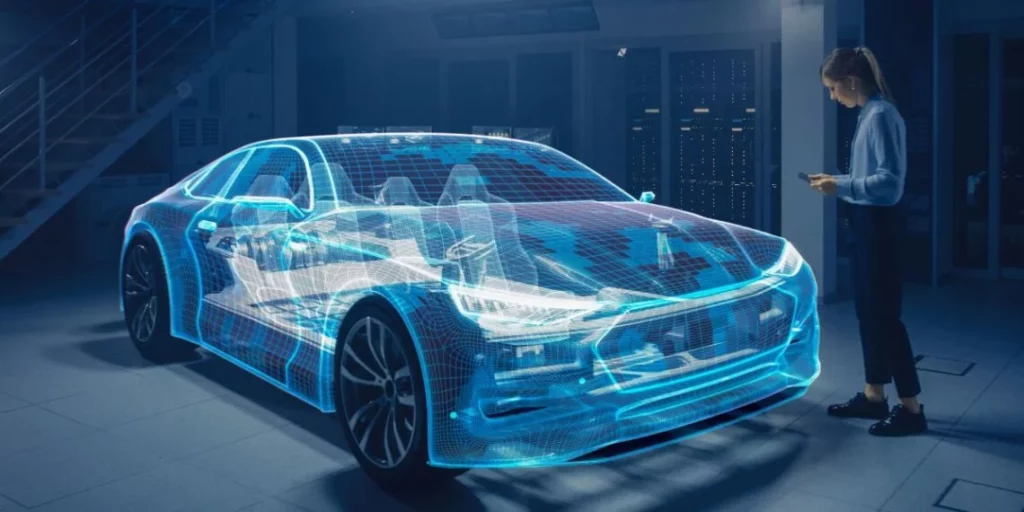The evolution of automotive operating systems has been remarkable, from the mechanical to the digital revolution. From the early days of mechanical systems, simple gears and cables controlled basic functions. As technology advanced, electro-mechanical systems were introduced, introducing electronic components like sensors and actuators. Electronic Control Units (ECUs) were introduced in the 1980s, managing engine control, transmission, and emissions. The digital revolution led to the development of infotainment systems, with touchscreens and connectivity features. The automotive industry moved towards open source platforms like Android Auto and Apple CarPlay, allowing for greater innovation. As we approach the future, the automotive industry is at the cusp of autonomous driving, incorporating AI and Machine Learning algorithms to enhance safety and redefine the driving experience. However, the integration of complex software systems requires robust cybersecurity measures and standardization of communication protocols. The role of operating systems in cars will continue to be pivotal, shaping the way we interact with and perceive vehicles.
The Mechanical Era: From Gears to Controls
The early days of automobiles were characterized by purely mechanical systems, devoid of any sophisticated operating systems. Simple gears, levers, and cables were responsible for controlling basic functions like acceleration, braking, and steering. The driver’s manual interaction with these mechanical components was the primary means of operating a vehicle, emphasizing the mechanical prowess required for driving in those times.
The Rise of Electro-Mechanical Systems
As technology advanced, the automotive industry witnessed the integration of electro-mechanical systems, marking a transition from purely mechanical setups. These systems introduced electronic components like sensors and actuators to assist in various driving functions. Early versions of cruise control and anti-lock braking systems (ABS) laid the foundation for more complex electronic control in vehicles.
Introduction of Electronic Control Units (ECUs)
The 1980s saw a significant shift with the widespread adoption of Electronic Control Units (ECUs) in cars. These embedded systems managed specific functions, such as engine control, transmission, and emissions. The use of ECUs allowed for better performance optimization, fuel efficiency, and emissions control. However, the lack of a unified and comprehensive operating system led to challenges in compatibility and scalability.
The Digital Revolution: Infotainment and Connectivity
The turn of the millennium witnessed a digital revolution in the automotive industry. Operating systems in cars evolved beyond mere engine control to include sophisticated infotainment systems. With the advent of touchscreens and connectivity features, drivers gained access to navigation, entertainment, and connectivity options. Proprietary operating systems developed by individual automakers became prevalent, leading to a fragmented landscape.
Standardization and Open Source Platforms
Recognizing the need for standardization and interoperability, the automotive industry started moving towards open source platforms. Operating systems like Android Auto and Apple CarPlay gained popularity, providing a standardized interface for smartphones to integrate seamlessly with in-car systems. This shift towards open platforms allowed for greater innovation, as developers could create applications compatible with a wide range of vehicles.
The Era of Autonomous Driving: AI and Machine Learning
As we approach the future, the automotive industry is at the cusp of a revolutionary era – autonomous driving. Operating systems are now evolving to incorporate Artificial Intelligence (AI) and Machine Learning (ML) algorithms that enable vehicles to make intelligent decisions based on real-time data. These advanced systems not only enhance safety but also redefine the driving experience by automating various aspects of vehicle operation.
Challenges and Considerations
While the evolution of operating systems in cars brings numerous benefits, it also poses challenges. The integration of complex software systems requires robust cybersecurity measures to protect vehicles from potential cyber threats. Additionally, the industry faces the challenge of standardizing communication protocols and ensuring compatibility between different components and systems.
Conclusion:
The journey of operating systems in cars reflects the remarkable progress of automotive technology. From the simplicity of mechanical systems to the complexity of AI-driven platforms, the evolution has been driven by the pursuit of safer, more efficient, and connected driving experiences. As we embrace the future, the role of operating systems in cars will continue to be pivotal, shaping the way we interact with and perceive the vehicles of tomorrow. With advancements in AI, connectivity, and automation, the automotive industry is on the brink of a transformative era that promises to redefine the very essence of driving.







